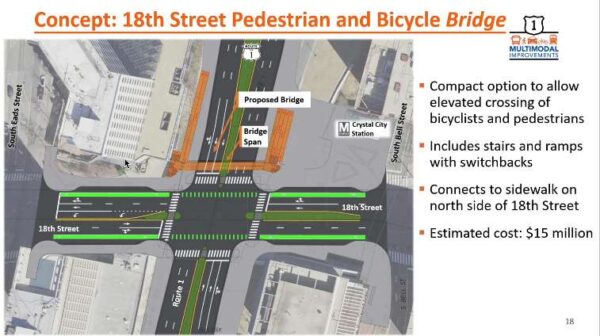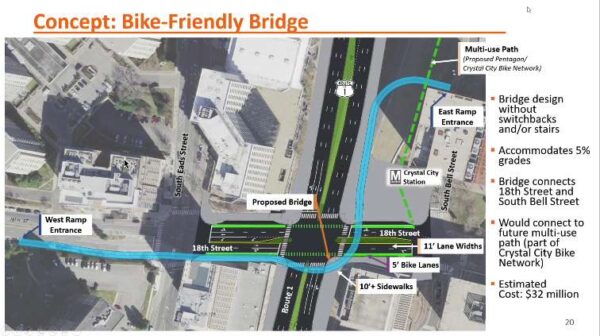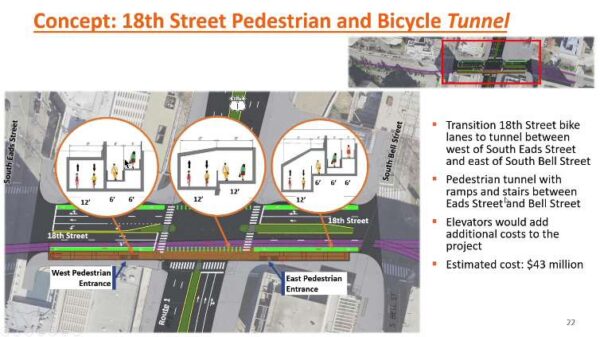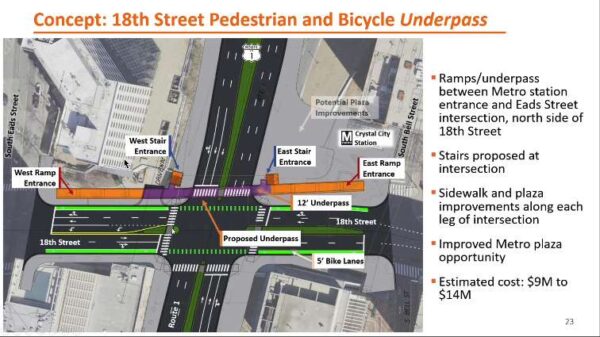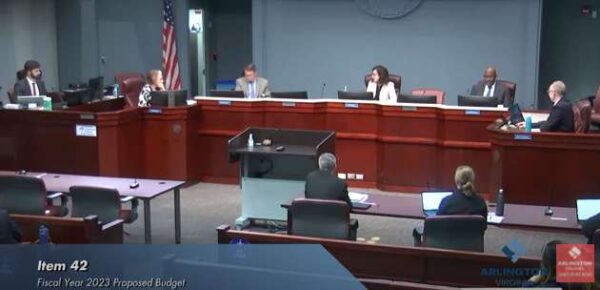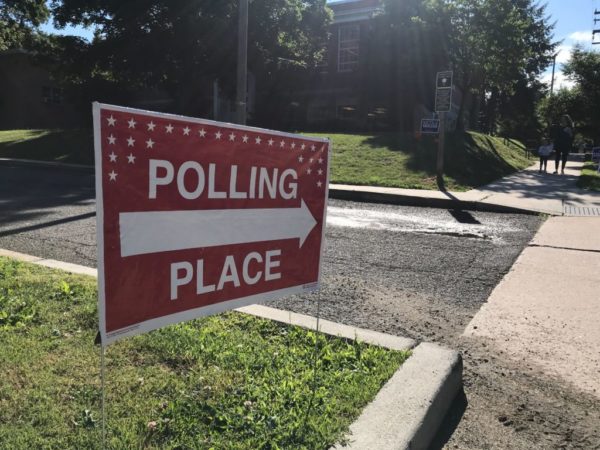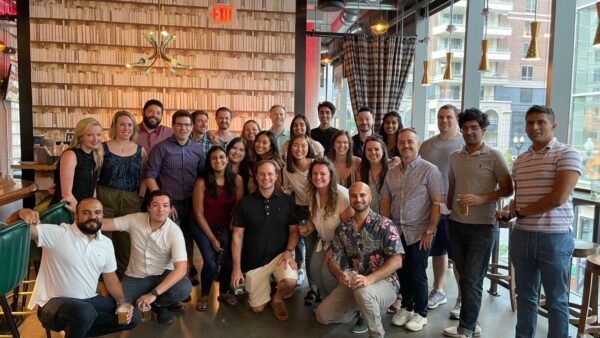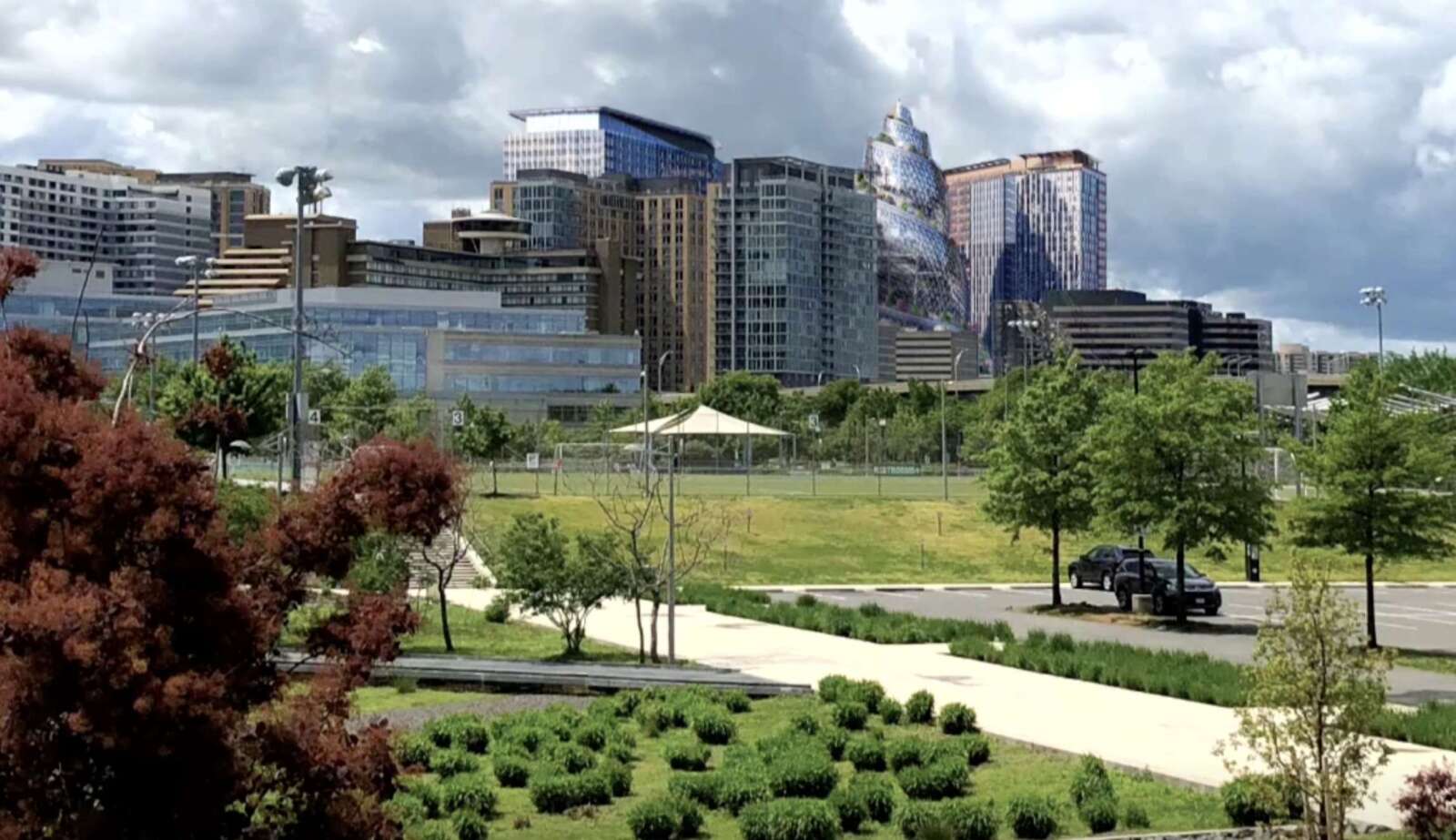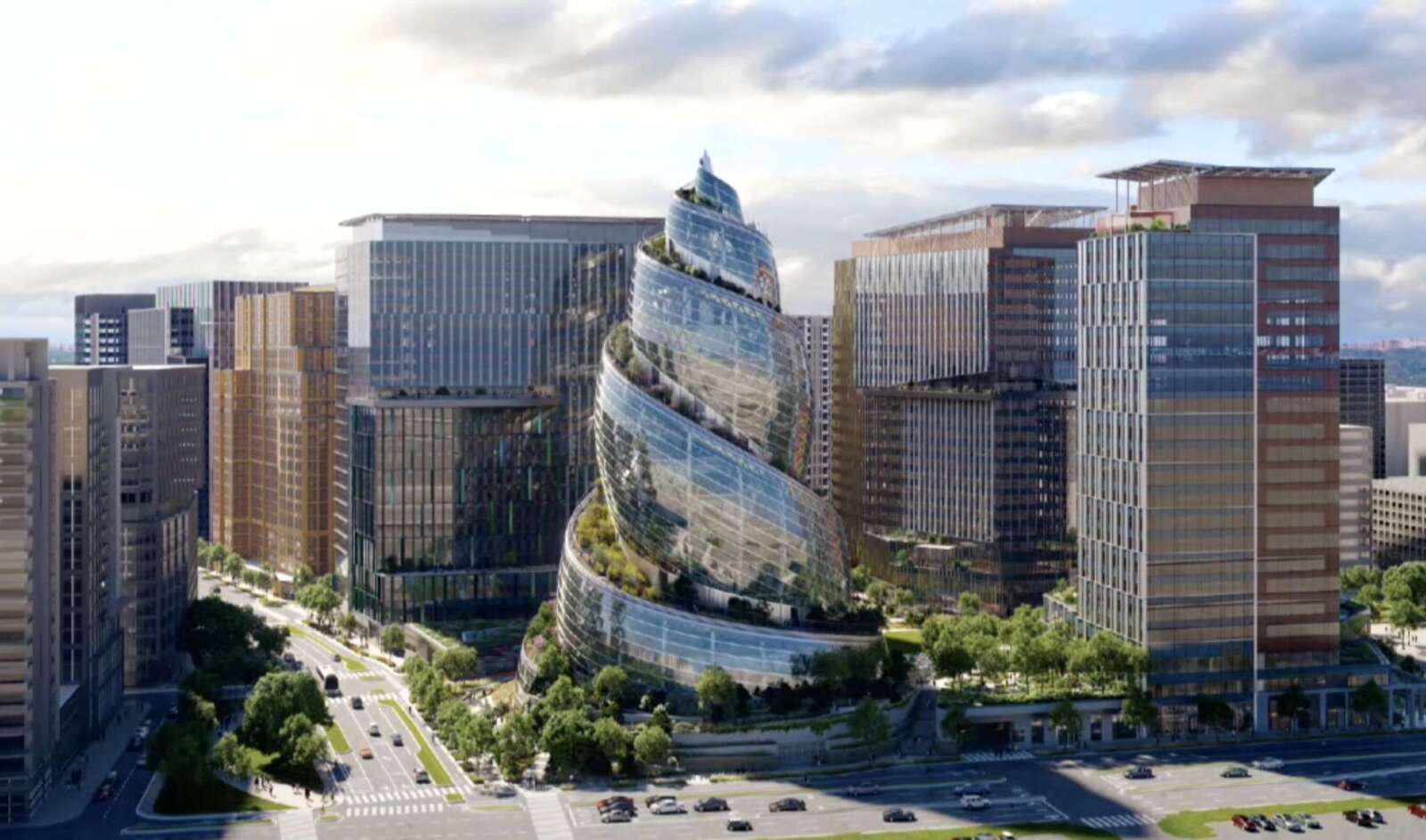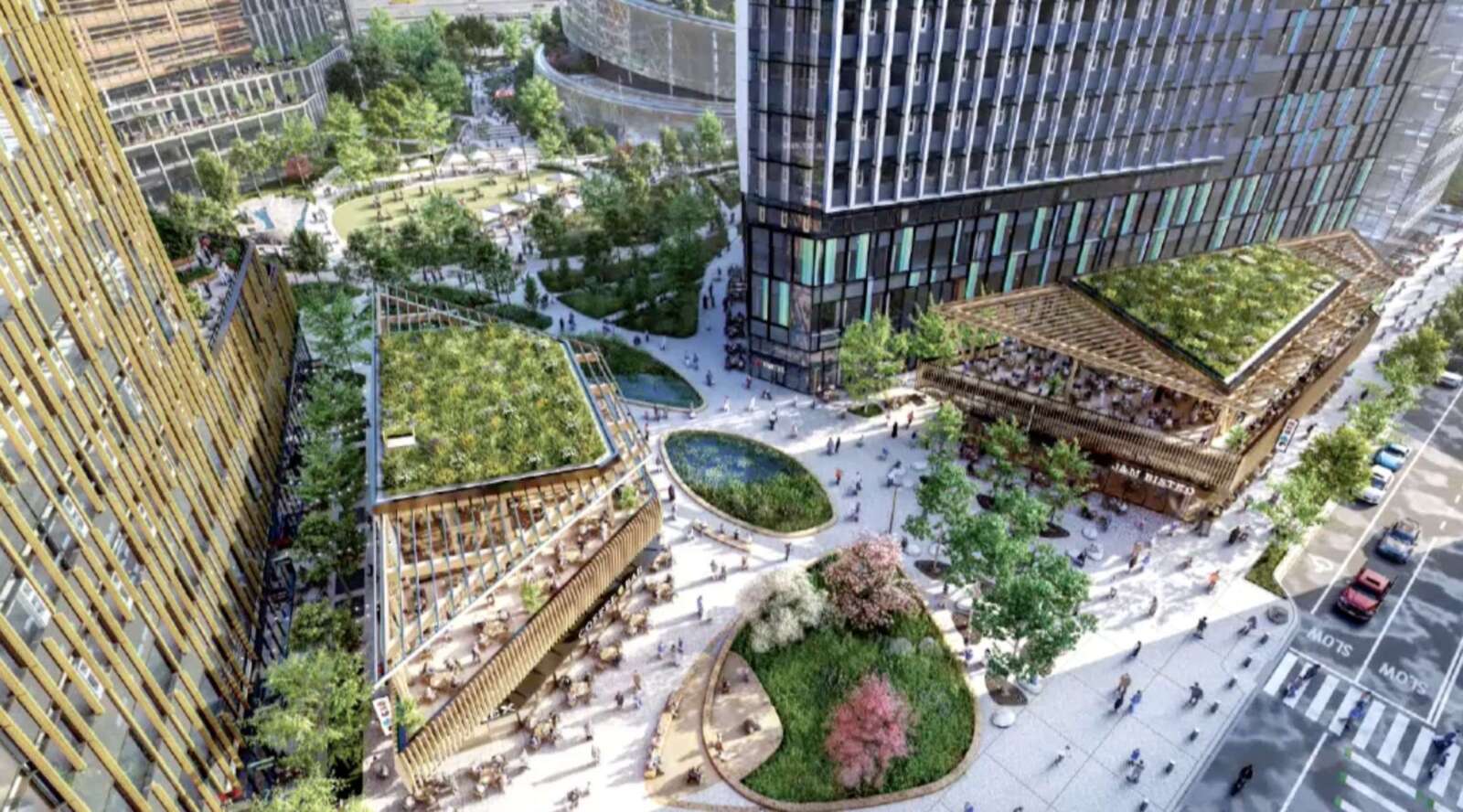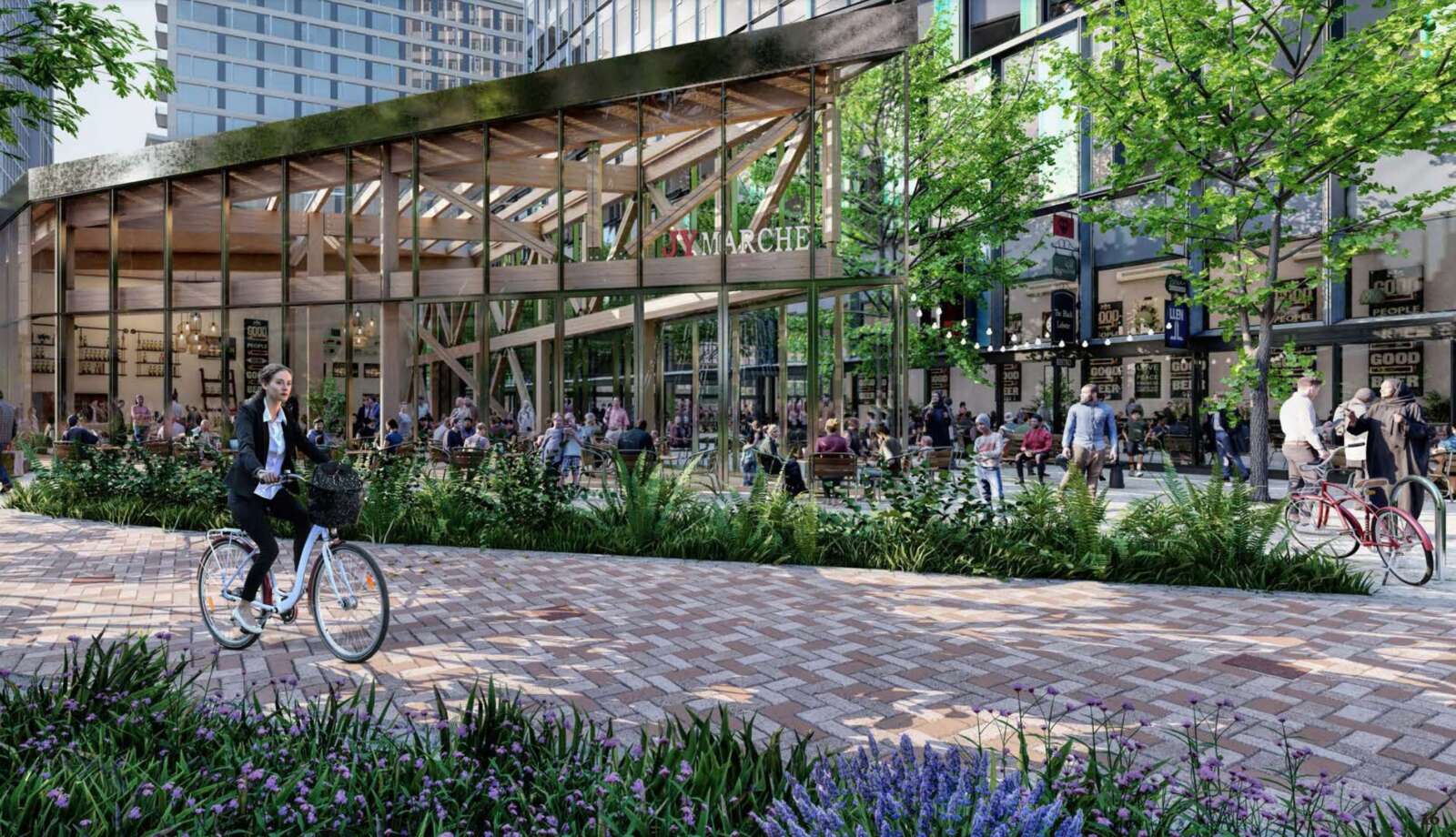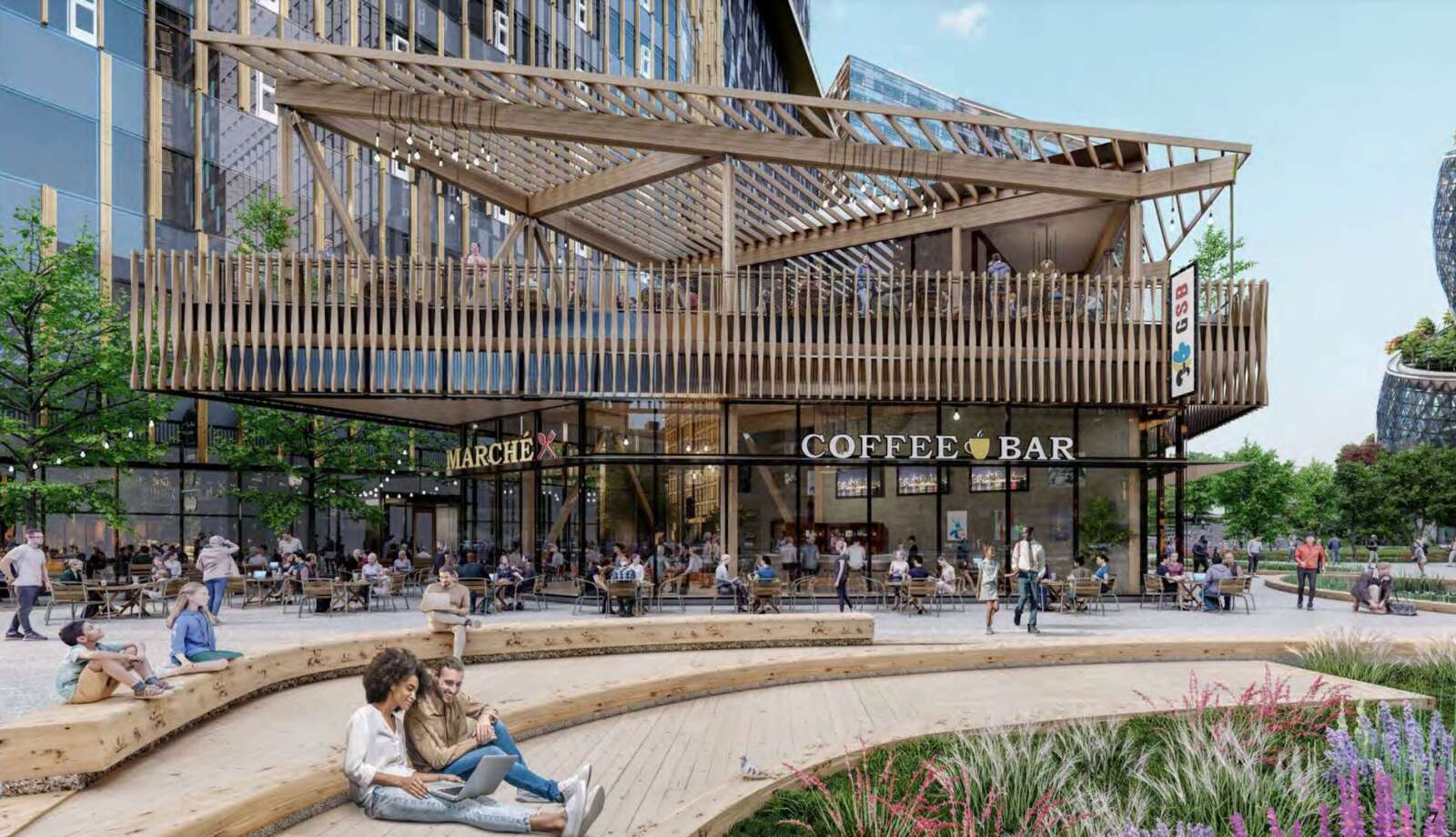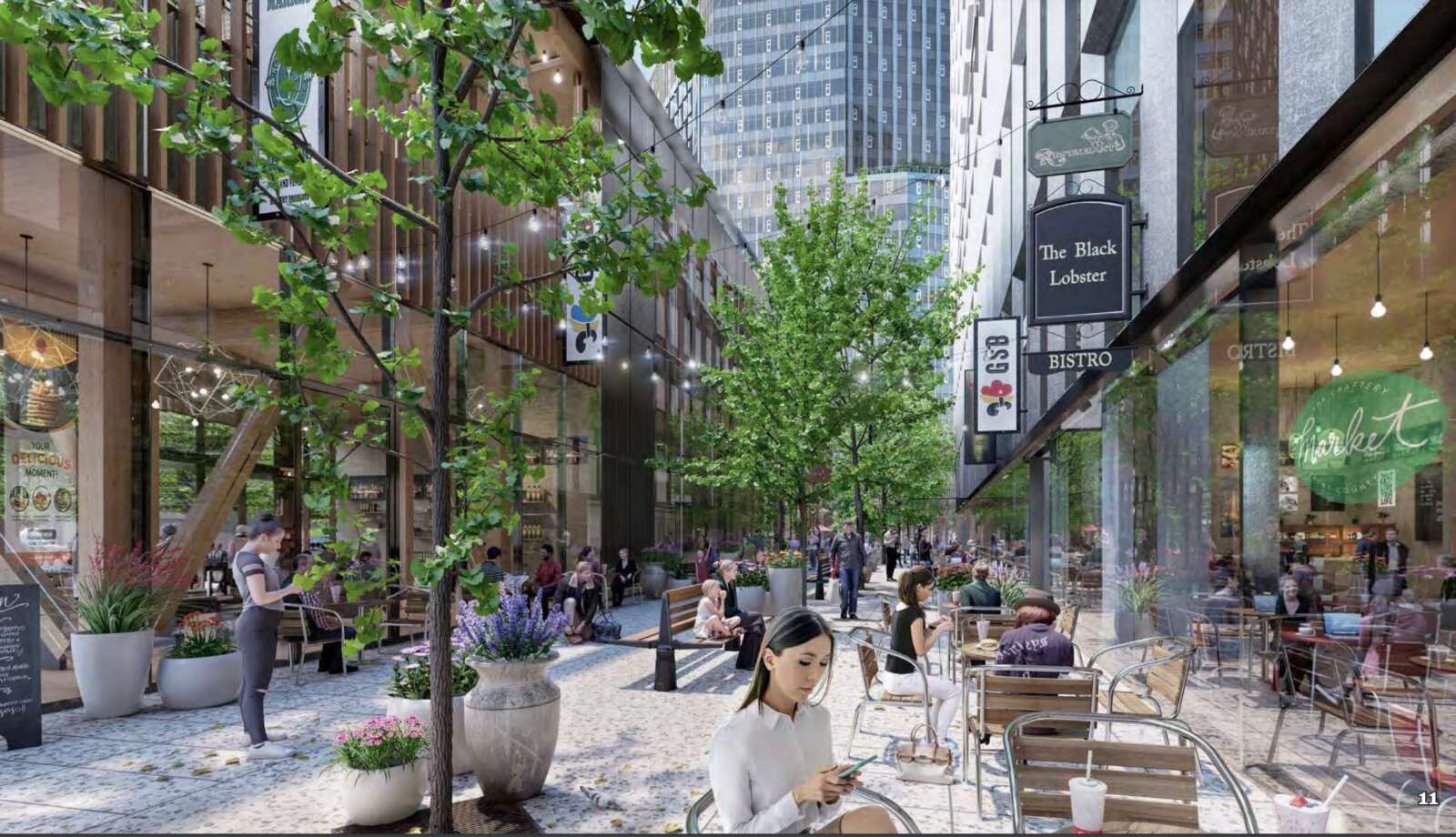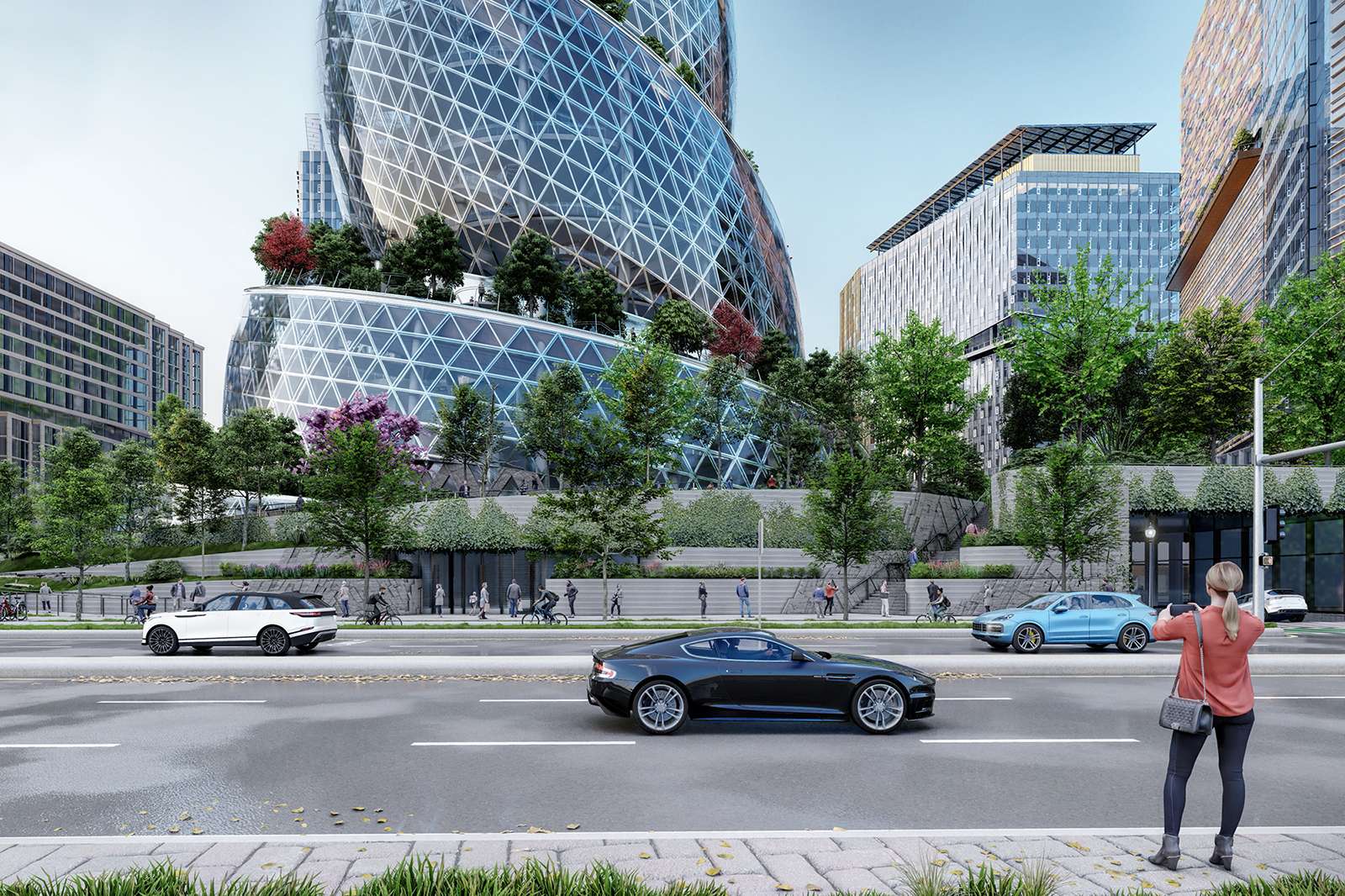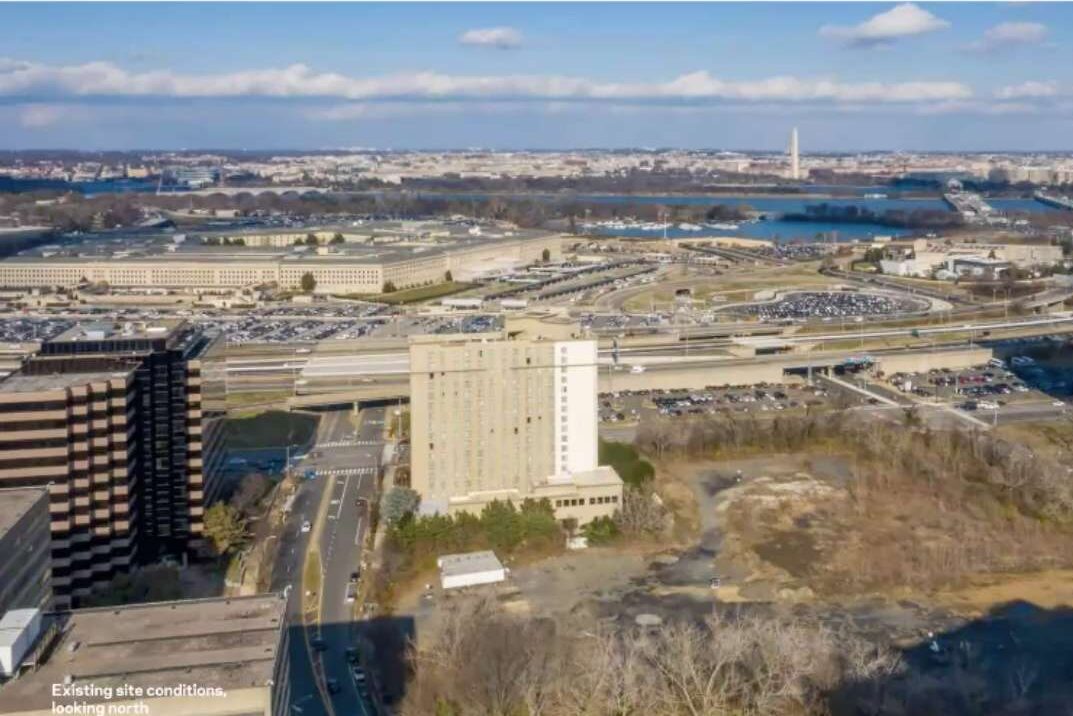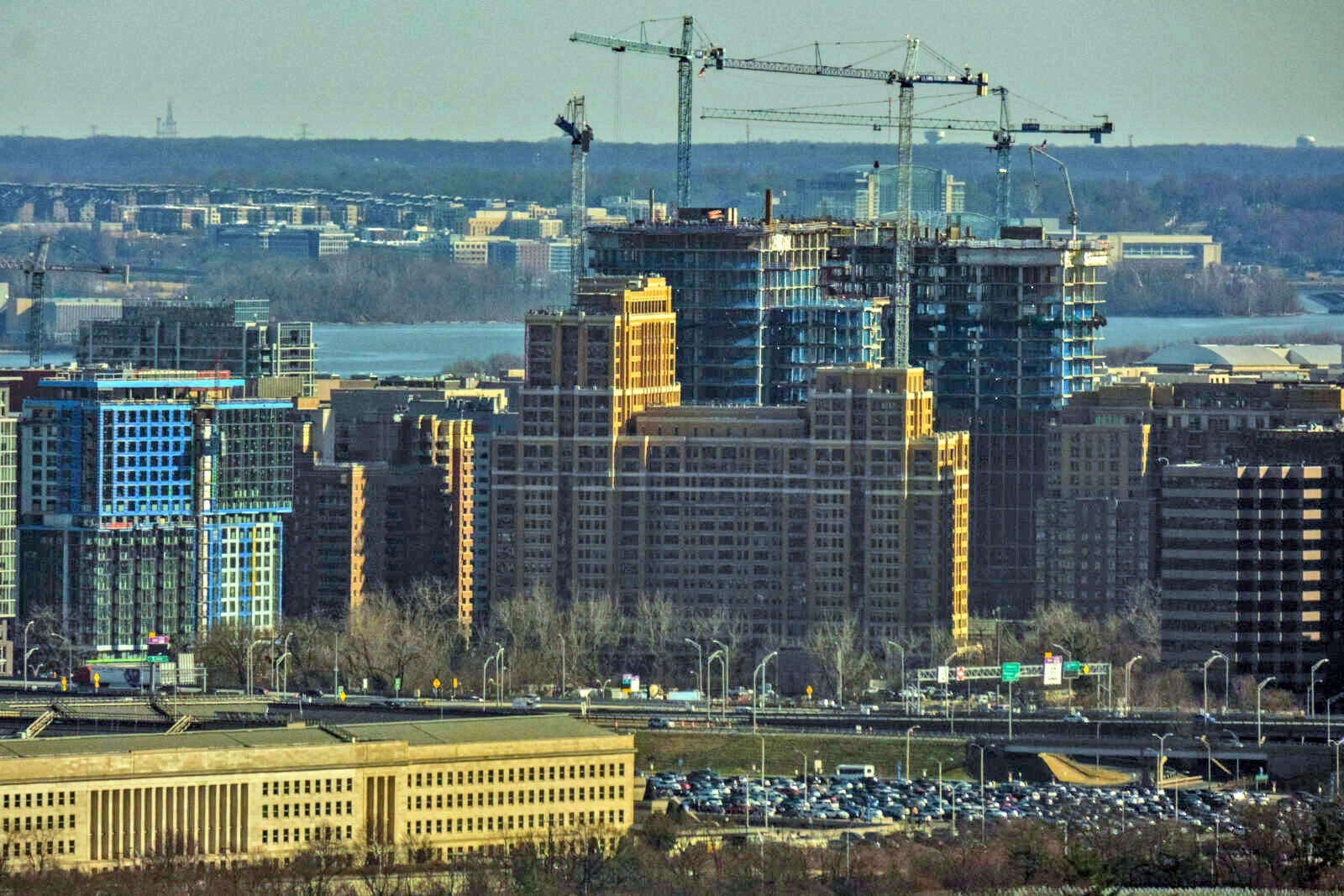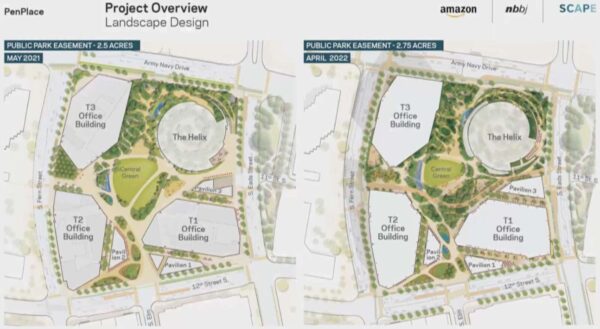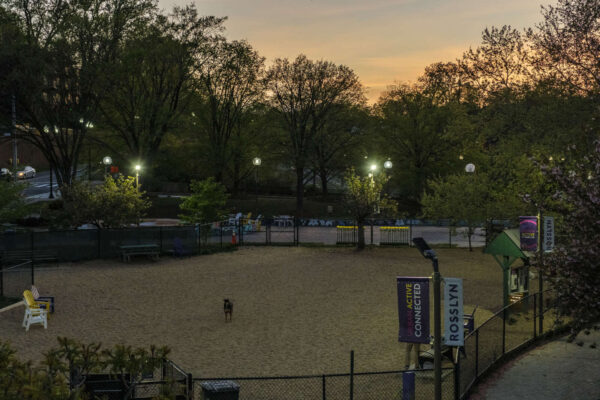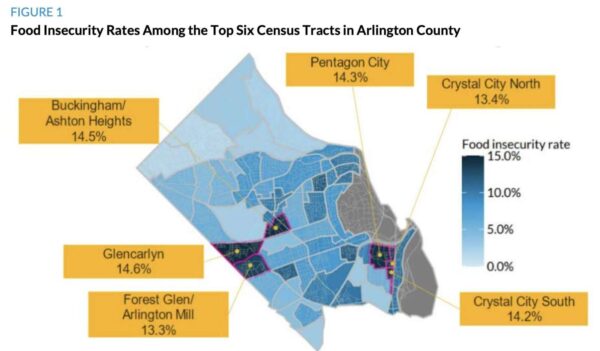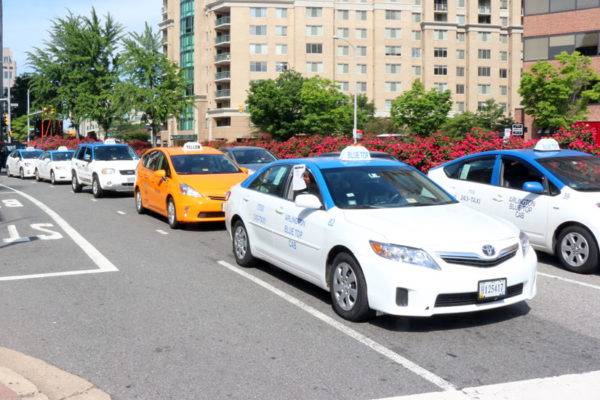VDOT is not turning back on its recommendation to lower the elevated parts of Route 1 in Crystal City, but it is considering new options for separated pedestrian and bike crossings near the Metro station.
The state transportation agency on Thursday provided an update on Phase 2 of its study, which is focused on how to make the “urban boulevard” vision for Route 1 from 12th Street S. to 23rd Street S. a reality.
VDOT unveiled concepts for alternatives to a street-level pedestrian crossing at 18th Street after its recommendation to lower elevated portions of Route 1 drew ire from the community for prioritizing cars over pedestrians.
Four alternatives to the at-grade pedestrian crosswalks at 18th Street S. were presented, including a pedestrian bridge; a more gradual, bicycle-friendly bridge; a tunnel; or an underpass.
While the options incorporate some public feedback, including the tunnel proposed by community group Livability 22202, the state is focused on finding a way to make the at-grade roadway work.
“Everything that happens in the Phase 2 study is really looking from that lens of having made that recommendation already and Phase 2 is really geared towards figuring out the details of how to make that recommendation from Phase 1 work,” said Dan Reinhard, VDOT’s lead project manager for the project.
The first phase of VDOT’s study recommended the elevated portions over 12th, 15th and 18th streets be lowered and Phase 2 examines the feasibility of doing that, what traffic in the area looks like and strategies to reduce vehicular traffic.
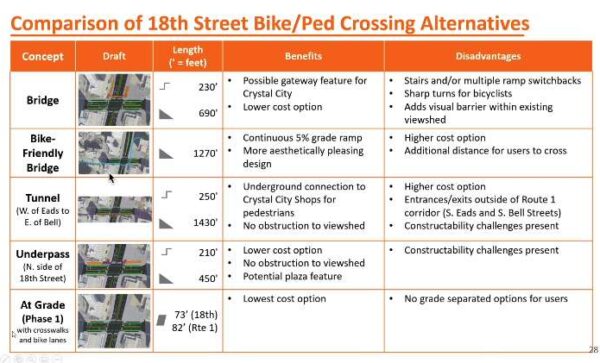
The first alternative to at-grade crossings is a 12-foot-wide pedestrian bridge with stairs and an elevator option. VDOT estimates this would cost $15 million.
The second bridge alternative, at an estimated $32 million, would add more gradual entry points for cyclists on 18th Street S. This option could link with a multimodal trail that the county plans to build near the Crystal City Metro station, said John Martin, with engineering consulting firm Kimley-Horn.
The third concept, a tunnel under Route 1, was informed by Livability 22202, a coalition of the Arlington Ridge, Aurora Highlands, and Crystal City civic associations. The estimated $43 million tunnel would accommodate both bicyclists and pedestrians, connecting them to the Crystal City shops and the Metro.
The final alternative is a 12-foot-wide pedestrian and bicycle underpass. In coordination with building owners of the plaza at the corner of Route 1 and 18th Street S., the tunnel could feature a public space at its east entry. An underpass is estimated to cost between $9 million and $14 million.
VDOT also presented two options to ease navigation of the sometimes chaotic 23rd Street S. intersection.
At 23rd Street S., VDOT imagines windening pedestrian spaces and medians, removing one southbound left turn lane and allowing through traffic in the northbound right turn lane. A second option would also add bike lanes on the west side of 23rd Street S.
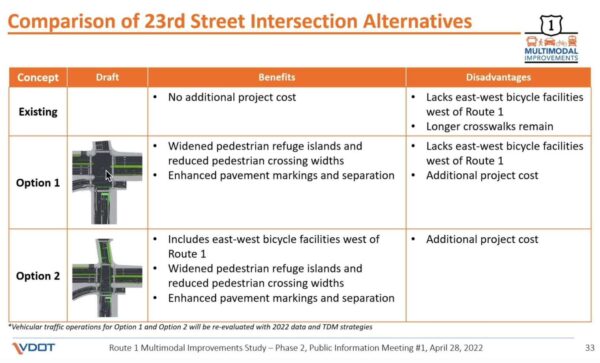
A second public meeting is expected in mid to late June, which will workshop the curb elements of street design and discuss potential relocation of 18th Street bus stops.
A third will be held in September or October and discuss ways to reduce vehicle volumes through Transportation Demand Management strategies. A final meeting will review the findings and recommendations.


